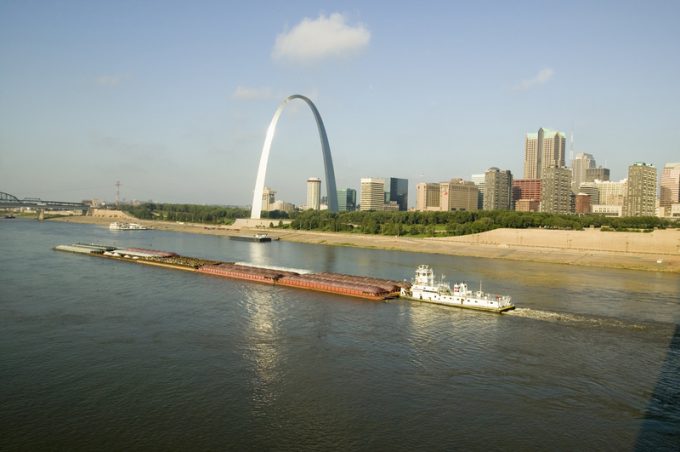Fallout from hurricanes a greater concern than strikes, say forwarders
Forwarders are growing increasingly concerned over the wave of storms battering the southern US states, ...
GM: RAISING THE ROOF GGM: IN FULL THROTTLE GZIM: MAERSK BOOST KNIN: READ-ACROSSMAERSK: NOT ENOUGHMAERSK: GUIDANCE UPGRADEZIM: ROLLERCOASTERCAT: HEAVY DUTYMAERSK: CATCHING UP PG: DESTOCKING PATTERNSPG: HEALTH CHECKWTC: THE FALLGXO: DEFENSIVE FWRD: RALLYING ON TAKEOVER TALKODFL: STEADY YIELDVW: NEW MODEL NEEDEDWTC: TAKING PROFIT
GM: RAISING THE ROOF GGM: IN FULL THROTTLE GZIM: MAERSK BOOST KNIN: READ-ACROSSMAERSK: NOT ENOUGHMAERSK: GUIDANCE UPGRADEZIM: ROLLERCOASTERCAT: HEAVY DUTYMAERSK: CATCHING UP PG: DESTOCKING PATTERNSPG: HEALTH CHECKWTC: THE FALLGXO: DEFENSIVE FWRD: RALLYING ON TAKEOVER TALKODFL: STEADY YIELDVW: NEW MODEL NEEDEDWTC: TAKING PROFIT

The current spell of seriously hot weather is threatening disruption on US inland waterways, and beyond.
Water levels on the Mississippi and Ohio rivers are falling at an alarming rate – near the city of Cairo, the level of the Ohio River dropped six feet in one week and experts predict a further decline of four feet before the end of the month.
On the Mississippi, the water is forecast to recede three feet in the St Louis area, and about six feet around Memphis.
Such declines would push both rivers to low stage classification, when barges may run aground and shipping lanes have to be narrowed.
Drought has afflicted virtually the entire midwestern US, and rainfall in the eastern states has been below normal averages for the season. And relief is not in sight, according to meteorologists.
So far, the lower water levels have not affected barge traffic, said Colin D’Abreo, CEO of Rhenus Project Logistics. But shippers and operators fear a repeat of last year, when low water levels seriously disrupted shipping on the Mississippi at a time when grain and soybean shipments were at their peak. On one day, more than 2,000 barges were stranded on the river after the closure of two sections.
Beyond the closures, the low water levels prompted draught restrictions on barges, to prevent them running aground, resulting in 20%-27% lower payloads. Moreover, the number of barges that could be towed by one tug was trimmed, forcing a scramble for tugboats.
Shipping costs escalated as cargo owners scrambled to secure alternative capacity. One hopper barge carries as much bulk traffic as 16 railcars or 70 trucks.
The impact on the US transport system was immense. About 578 million tons of cargo are shipped annually on US inland waterways, and about 60% of grain exports are moved on the Mississippi.
And traffic has increased this year: in the week ended 8 July, 511,000 tons were moved on barges along the Mississippi, up from 403,000 tons the previous week, according to the US Department of Agriculture. Barge rates climbed 11%, week on week.
Members of the Agriculture Transportation Coalition experienced many logistics challenges resulting from the low water levels last year, reported Peter Friedmann, the organisation’s executive director, who added: “Many elevators filled temporary space throughout to be able to continue to serve their customers.”
However, he believed at this point it was too early to make prediction for the upcoming shipping season, as there was still enough time to accumulate sufficient rainfall to lift river levels. But most members of the coalition were preparing temporary space at many locations to be able to continue to serve farmer customers during harvest, he said, adding that this was an annual preparation prior to harvest.
Shipping on the inland waterways has not only been affected by drought. In April, flooding temporarily halted barge traffic, the result of large volumes of snowfall during the winter, which forced closures of locks and dams, resulting in no acceptance of freight on stretches of the Mississippi.
Wildfires have also caused concern this summer, and this year the problem has been extreme. By the end of June, fires had already destroyed more forest acreage than in the whole of 1995, the previous record year, according to the Canadian Interagency Forest Fire Centre.
Smoke from forest fires in Canada, drifting down the east coast, caused a temporary ground stop at New York’s LaGuardia Airport, due to poor visibility. Hundreds of flights were delayed and dozens cancelled that day.
In June 2021, large forest fires in British Columbia severed rail and road links from the coast to the Canadian interior, which seriously aggravated the pile-up of containers at the port of Vancouver.
Shippers have ample cause for concern about climate-related disruption of their traffic in the months ahead.
Comment on this article